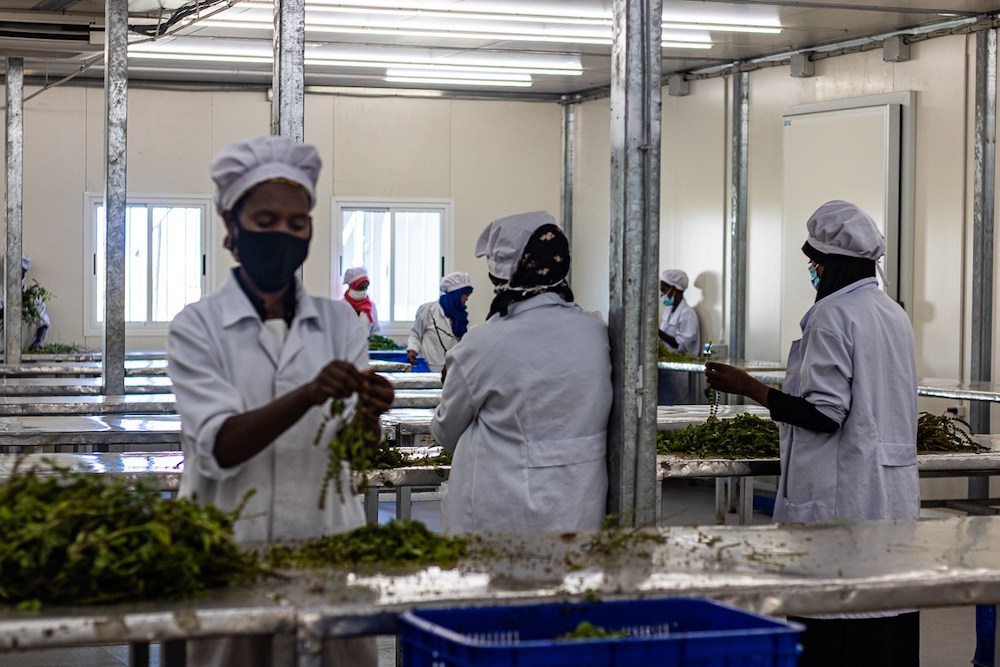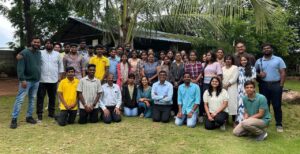For Julian Mitchell, it is unconscionable that Kenya spends so much money importing food. In the first six months of 2021, Kenya spent $909.4 million on food imports—while 30% to 40% of locally-grown crops each season are wasted due to inefficiencies in the supply chain.
“The rate at which food goes to waste is alarming,” Mitchell tells AFN. “Money is going in the wrong direction. Kenya should be exporting food.”
Mitchell, from the UK, has been living in East Africa for a decade and understands first-hand that the region is more than capable of producing enough food to feed itself. He founded InspiraFarms, a cold-chain tech company, with a mission to helping Kenya’s farmers reduce post-harvest losses and enabling food processing companies to extend their products’ shelf-life.
Inclusive cold chain
Ninety percent of Kenya’s food is grown by smallholder farmers, most of whom lack access to the types of cold storage facilities that are commonplace on and near farms in the US and Europe. It’s a common story in emerging markets.
As a remedy, InspiraFarms designs, manufactures and finances energy-efficient, solar-powered cold rooms for agribusinesses and food distributors.
“Preventing losses comes with economic and environmental benefits across the food chain,” says Mitchell.
Benefits include reduced food waste, which enhances food security and enables farmers to earn more; higher quality food for consumers; and increased opportunities for food producers and processors to reach export markets. A better cold chain also has positive environmental impacts: InspiraFarms’ own research shows that food waste contributes up to 6% of global greenhouse gas emissions.
InspiraFarm’s cold storage units come with a solar array for power and are designed to be modular, so that they can be built on-farm or near farms and so that they can be easily customized for the needs and space of each user. Each cold room ranges from 20 to 2,000 square meters.
“All our systems are designed to be super energy efficient, because we want to have lower impact on the environment and also lower power bills for our customers,” explains Mitchell.
One of InspiraFarms’ customers, a fresh produce export company in Kenya called Instaveg Limited, was facing numerous challenges due to its poor, decades-old cooling facilities. Food losses were high. It was struggling to meet certification standards for higher-value export markets. And its maintenance and energy costs were exorbitantly high.
InspiraFarms worked with Instaveg to spec out its cold chain needs, as well as its products’ shelf life, loss rate and operational expenditures. It then helped Instaveg install a 240-square-meter storage, pre-cooling and processing facility, along with 125-square-meter of auxiliary space.
InspiraFarms says Instaveg has not only significantly reduced its losses, but it’s now meeting stricter food safety standards and has reduced its energy bill by 30%.
InspiraFarms has installed its facilities in 11 African countries to date. Its core markets are Kenya and Zimbabwe, where it works primarily with mid-size farms and horticulture supply-chain service providers like Instaveg. Other clients include Kenya-based Twiga Foods, Sidai and Kenya Horticulture Exporters, Lauetta Farm and Claremont Farm in Zimbabwe, Ausmoz Farm in Mozambique, GreenPath Food in Ethiopia, and Get It in Rwanda.
Growth path
Last May, InspiraFarms closed a Series B funding round led by KawiSafi Ventures, a growth equity fund focused on renewable energy in East Africa. Existing investors Energy Access Ventures and PYMWYMIC also participated. Then in December, off-grid solar lender SunFunder offered InspiraFarms $500,000 in debt.
The funding, says Mitchell, gives the company runway to focus on making its products more affordable to the markets it serves while also offering customer financing directly. InspiraFarms’ offers both long-term loans and seasonal repayment plans.
“The equipment is not cheap,” Mitchell notes. “Finding ways to support customers is very important.”
Another way the company does this is by encouraging farmers to form cooperatives and invest in cold rooms as a group.
“The lower you go down the chain towards smallholder farmers, the less they can afford the technology. You have to find payment mechanisms that work for them over the long-term,” he explains.
Mitchell believes government intervention could be a game-changer. He’d first like to see policy makers to tighten cold storage facilities standards, which would help eliminate the problem of low-quality food products entering market. He would also like to see African governments ease financial constraints, like the hefty import duties InspiraFarms pays for on its cold rooms, which are manufactured in Italy. Reducing import duties and value added taxes would enable InspiraFarms to pass cost-savings on to customers, he says.
Finally, African governments and their respective agricultural agencies should advocate for the value of stronger cold chains as a means to reducing their dependence on food imports and building export capacity.
“The only way to unleash Africa’s export potential,” says Mitchell, “is by increasing the shelf life of quality produce.”




